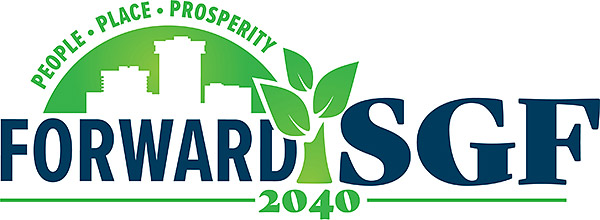Neighborhood Revitalization – Restore SGF
Neighborhood Revitalization is a top initiative discussed in Chapter 7: Housing and Neighborhoods. It includes Restore SGF, a local initiative that aims to encourage reinvestment and homeownership in Springfield’s neighborhoods.
Local banks and loan companies have pledged almost $2 million to help encourage homeownership among Springfield residents and enhance the quality of homes in the city.
Restore SGF
Restore SGF is a local initiative that aims to encourage reinvestment and homeownership in Springfield’s neighborhoods. It provides a central resource point for all residential incentives and loan programs offered by the City of Springfield. In collaboration with real estate and banking institutions, Restore SGF also markets available programs and provides affordable financing opportunities. One example of the successful implementation of a program like this is in Des Moines, Iowa. Invest DSM is a non-profit organization created in in 2018 to improve property values and quality of life in the area’s neighborhoods.
The City should continue to support this initiative as a major player in neighborhood revitalization, connecting residents, neighborhood associations, and other relevant stakeholders with available resources.
Housing Study
Adequate, safe and cost appropriate housing is a concern for the City of Springfield, as well as cities around the nation. In 2022, following extensive community engagement and robust public support, the City adopted a new comprehensive plan, Forward SGF – 2040. A key component of the Plan focuses on housing and neighborhoods, with four aspirational goals to guide future policies and decision-making.
- Support the Creation of Complete Neighborhoods
- Diversify Housing Choices
- Revitalize Springfield’s Neighborhoods
- Cultivate Neighborhood Identity and Cohesion
To support decision-making, the City needed a fresh, unbiased evaluation of the physical conditions of housing, neighborhoods, demographics and the marketplace. This report examined these conditions through on-the-ground data gathering, research, and considerable community engagement. APD Urban Planning and Management, LLC was commissioned to develop the Springfield Housing Study, completed between November 2022 and October 2023. The study documents data on housing, neighborhoods, and the residential market in Springfield. Throughout the process, community feedback was elicited on multiple levels, and implementation strategies for both neighborhoods and housing were proposed.
Nuisance Properties
In Spring 2023 the Nuisance Property Work Group presented their findings to City Council. They found that nearly 18,000 code complaints had been filed between the years 2015 and 2020, with 71% of them being related to renter-occupied properties and 29% of them being specific to owner-occupied properties.
At the August 21, 2023 City Council meeting, Councilmember Brandon Jenson and Councilmember Monica Horton co-sponsored a resolution to require quarterly updates from the City of Springfield’s Building Development Services Department. These updates are to provide a statistical foundation prior to the determination of potential solutions. The Council meetings relative to the nuisance property initiatives can be viewed on the presentations tab at the top of this webpage.

Chapter 7 – Housing & Neighborhoods
- Goal 1. Support the Creation of Complete Neighborhoods
- (1.1) Create and Expand Neighborhood Amenities
- (1.2) Foster Walkable Neighborhoods
- (1.3) Beautify Neighborhoods
- Goal 2. Diversify Housing Choices
- (2.1) Support Context-Sensitive Higher Density Development
- (2.2) Encourage Creative Housing Solutions
- (2.3) Create Attainable, Market-rate Housing
- Goal 3. Revitalize Springfield’s Neighborhoods
- (3.1) Reinvest in Existing Homes
- (3.2) Expanding Housing Programs
- (3.3) Target Resources Where Most Needed
- (3.4) Provide Healthy Accessible Housing
- (3.5) Champion Safe, Healthy, Livable Housing and Neighborhoods
- Goal 4. Cultivate Neighborhood Identity and Cohesion
- (4.1) Strengthen Identity Through Neighborhood Organization
- (4.2) Continue the Process of Proactive Neighborhood Planning
- (4.3) Encourage Neighborhood Civic Involvement
- (4.4) Build Strong Relationships with Neighborhood Schools and Universities
- (4.5) Preserve Historic Resources
Chapter 8 – Economic Development
- Goal 4. Support Business Growth and Reinvestment in Neighborhood Commercial Hubs and Downtown
- (4.1) Support Local Commercial Hubs
- Goal 5. Support Innovation, entrepreneurship, and Workforce Development
- (5.1) Neighborhoods as Economic Engines






